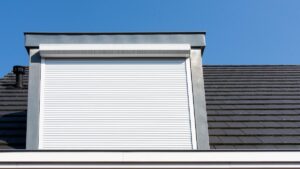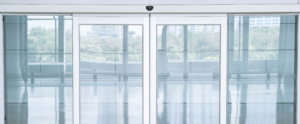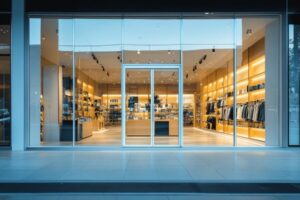

When Shop Front Installation Goes Wrong
- March 23, 2023
- admin

When shop front installation goes wrong, it can be a costly and time-consuming problem to fix. Poor or incorrect installation can lead to structural damage, water damage, and leaks, as well as gaps and air leaks that can compromise the security of the building.
It is important to ensure that the installer is properly qualified and experienced in shop front installation and that they follow the manufacturer’s instructions precisely. Any discrepancies should be corrected immediately to prevent further potential damage.
Additionally, regular maintenance and inspections should be conducted to ensure proper installation and to identify any potential issues before they become a bigger problem.
When Shop Front Installation Goes Wrong When it comes to shop front installation, it is important to ensure that the job is done right. If the installation is done incorrectly, it can lead to a variety of problems, from safety concerns to aesthetic issues.
In this blog, we will discuss the various scenarios in which shop front installation can go wrong and how to rectify them. We will also look at some of the best practices for shop front installation and repair so that you can ensure that your shop front looks great and is safe and secure.
What Can Go Wrong With Shop Front Installation?
Shopfronts are a great way to make a good first impression on customers. They are the face of your business, and it is important that they are installed correctly. Unfortunately, there are many potential problems that can arise during the installation process.
There are a number of potential problems that can arise during shopfront installation. Some of the most common issues include:
- Poor Quality Materials: One of the biggest issues that can arise during shopfront installation is the use of poor-quality materials. This can result in the shopfront being weaker and less durable than it should be.
- Incorrect Measurements: Another common problem is incorrect measurements. If the shopfront is not measured correctly, it will not fit correctly and may not be able to be installed properly.
- Inadequate Planning: Poor planning can also cause issues during installation. If the shopfront is not designed and planned properly, it may not fit properly or may not be able to be installed at all.
- Poor Workmanship: Poor workmanship can also be an issue. If the shopfront is not installed correctly, it could cause problems such as leaks and structural issues.
- Poor Maintenance: Poor maintenance can also lead to problems. If the shopfront is not properly maintained, it can lead to weakened structures, leaks, and other issues.
How to Avoid Problems With Shop front Installation
- Choose Quality Materials: One of the best ways to ensure that the shopfront is installed properly is to choose quality materials. Quality materials are more durable and will last longer, meaning that the shopfront is less likely to suffer from problems.
- Get Professional Measurements: It is also important to get accurate and professional measurements. This will ensure that the shopfront is designed and installed
- Plan Ahead: It is also important to plan ahead. This will ensure that the shopfront is designed and installed correctly.
- Hire Professional Installers: It is also important to hire professional installers. Professional installers will be able to install the shopfront correctly and make sure that it is done properly.
- Maintain Regularly: It is also important to maintain the shopfront regularly. This will help to ensure that the shopfront remains strong and durable.
Best Practices for Shop Front Installation
- Safety First :Safety is of the utmost importance when it comes to shopfront installation. Before starting the installation process, it is important to take all safety precautions and ensure that the area is safe to work in. This includes making sure that the area is well-lit, that there are no potential hazards such as sharp objects or exposed wires, and that all equipment is in good condition. Additionally, it is important to wear protective gear such as safety glasses and gloves to protect against any potential injury.
- Choose the Right Shopfront :Choosing the right shopfront is essential for a successful shopfront installation. It is important to consider the size and shape of the shopfront as well as the intended use of the shopfront. For example, if the shopfront will be used as an entrance to a store, it is important to choose a shopfront that is large enough to accommodate the number of customers who will be entering the store. Additionally, it is important to consider the aesthetic of the shopfront and to choose a shopfront that will complement the overall look and feel of the store.
- Prepare the area: Before beginning the installation of the shopfront, it is important to prepare the area. This includes making sure that the area is level and that all debris and obstructions are removed. Additionally, it is important to measure the area and to make sure that the shopfront will fit properly.
- Follow Installation Instruction: When installing a shopfront, it is important to follow the installation instructions carefully. It is important to read and understand the instructions thoroughly before beginning the installation process. Additionally, it is important to make sure that all the necessary tools, equipment, and materials are available and in good condition before beginning the installation process.
- Hire a professional :Although it is possible to install a shopfront on one’s own, it is often best to hire a professional to ensure that the shopfront is installed properly. Professional installers have the knowledge and experience necessary to install the shopfront correctly and safely. They also have the necessary tools and equipment to complete the job properly.
Types of Shopfronts: Choosing the Best One for Your Business
When it comes to setting up a business, the choice of shopfront is an important decision. It is the first impression that customers get when they enter your shop and it can be the difference between success and failure. In this blog, we will take a look at the different types of shopfronts available and how to choose the best one for your business.
There are a number of different types of shopfronts available, each with its own advantages and disadvantages. Some of the most popular types of shopfronts include:
- Glass Shopfront: Glass shopfronts are a popular choice for many businesses, as they are stylish and modern. Glass shopfronts allow natural light to enter the shop, creating a bright and inviting atmosphere. They are also easy to clean and maintain, and they provide excellent security against intruders.
- Aluminium Shopfront: Aluminium shopfronts are a great choice for businesses that require a lightweight, low-maintenance shopfront. Aluminium shopfronts are also highly secure, as they are strong and durable. However, aluminium shopfronts do not let in as much natural light as glass shopfronts, so they may not be the best choice for businesses that need a bright and airy atmosphere.
- Wooden Shopfront: Wooden shopfronts are a classic choice and they provide a warm, inviting atmosphere. Wooden shopfronts are also highly customizable, as they can be painted or stained to match the style of the shop. However, wooden shopfronts require more maintenance than other types of shopfronts, as they are prone to wear and tear.
- Steel Shopfronts: Steel shopfronts are extremely secure and durable, making them ideal for businesses that need a strong and reliable shopfront. Steel shopfronts also provide excellent insulation, as they can keep out heat and cold. However, steel shopfronts are not very visually appealing and they can be difficult to customize.
How to Choose the Best Shopfront for Your Business
When choosing a shopfront for your business, it is important to consider your budget, the aesthetic of your shop, and the security requirements of your business. Here are some tips to help you choose the best shopfront for your business:
- Determine your budget: The cost of a shopfront will vary depending on the type of shopfront you choose. Glass and aluminium shopfronts tend to be more expensive than wooden and steel shopfronts. It is important to determine your budget before you start shopping for a shopfront, as this will help you narrow down your options.
- Consider the aesthetic: The shopfront should complement the interior of your shop and the overall aesthetic of your business. Consider the colours and materials that will best suit your business and make sure to choose a shopfront that will enhance the look and feel of your shop.
- Think About Security: The security of your shopfront is extremely important, as it will protect your shop from intruders. Steel and aluminium shopfronts tend to be the most secure, but they may not be the best choice if you are looking for a more aesthetically pleasing shopfront.
FAQs
If your shop front installation goes wrong, you should contact the installer and discuss the issue. If the installer is unable to resolve the problem, you may need to contact a professional contractor to fix the issue.
To prevent shop front installation from going wrong, you should ensure that you hire a reliable and experienced installer. Make sure that the installer has the proper certifications and experience to do the job correctly.
The most common causes of shop front installation going wrong are incorrect measurements, incorrect installation techniques, and poor quality materials.
When looking for a shop front installer, you should ensure that the installer has the proper certifications, experience, and references. You should also inquire about the installer’s track record and any guarantees they provide.
If you are not satisfied with the shop front installation, you should contact the installer and discuss the issue. If the installer is unable to resolve the problem, you may need to contact a professional contractor to fix the issue.





